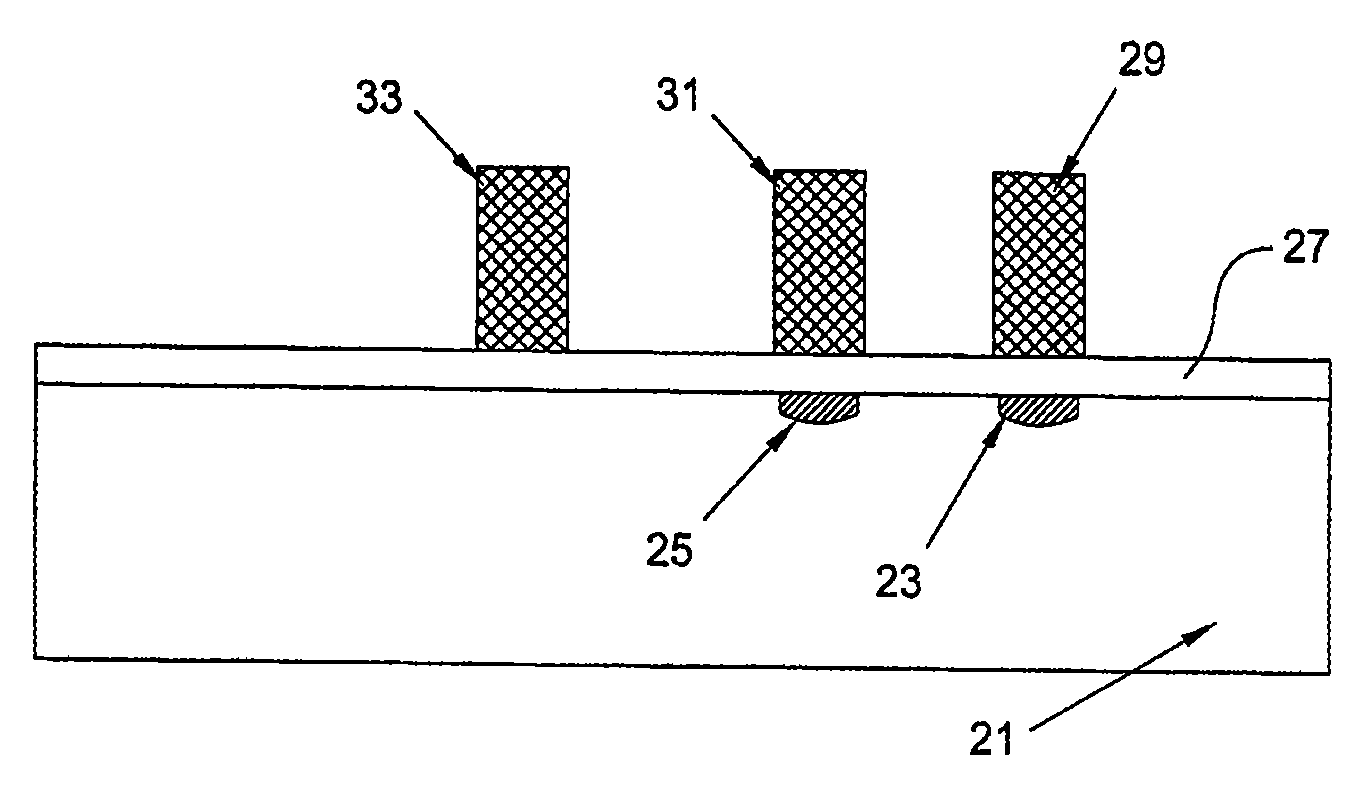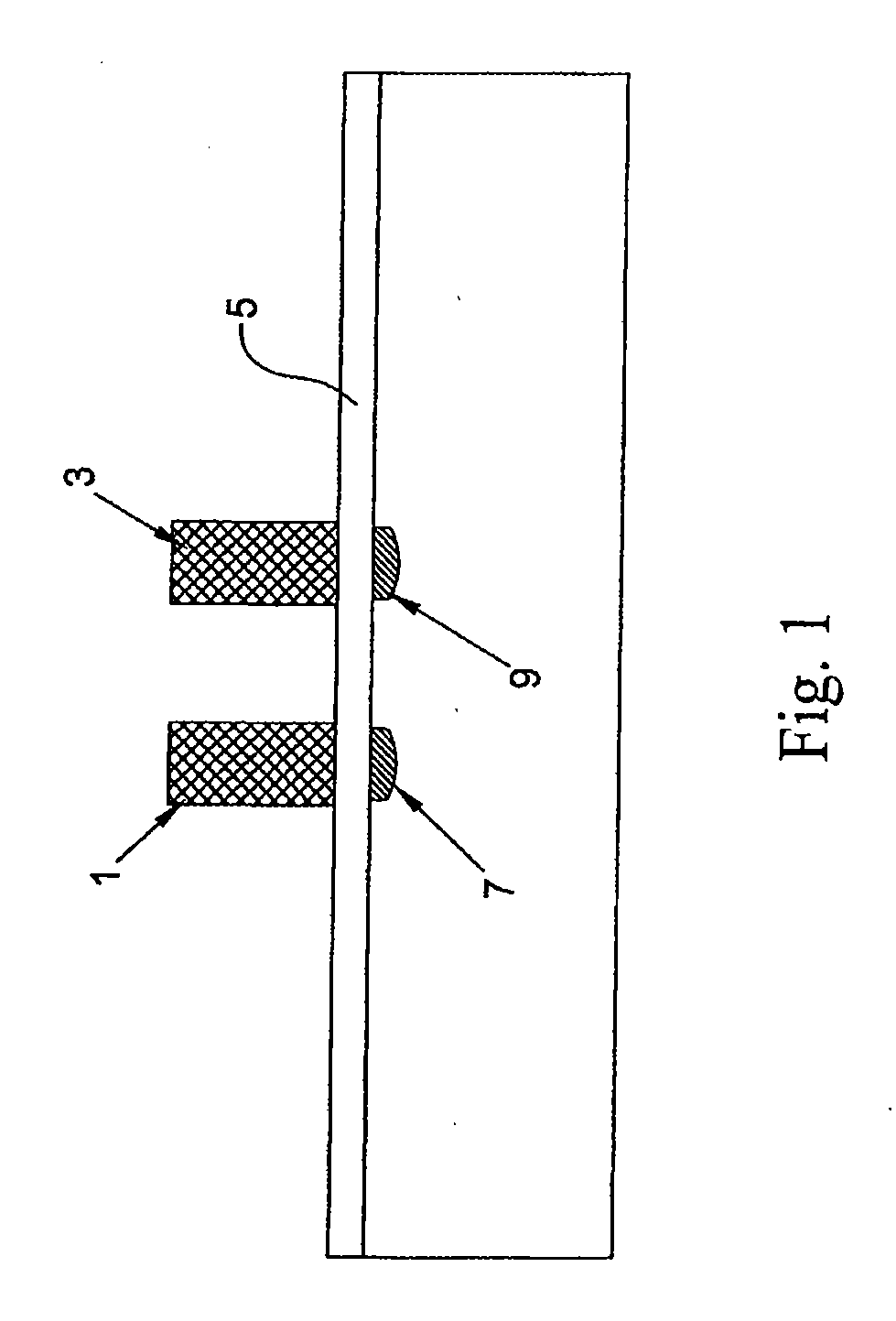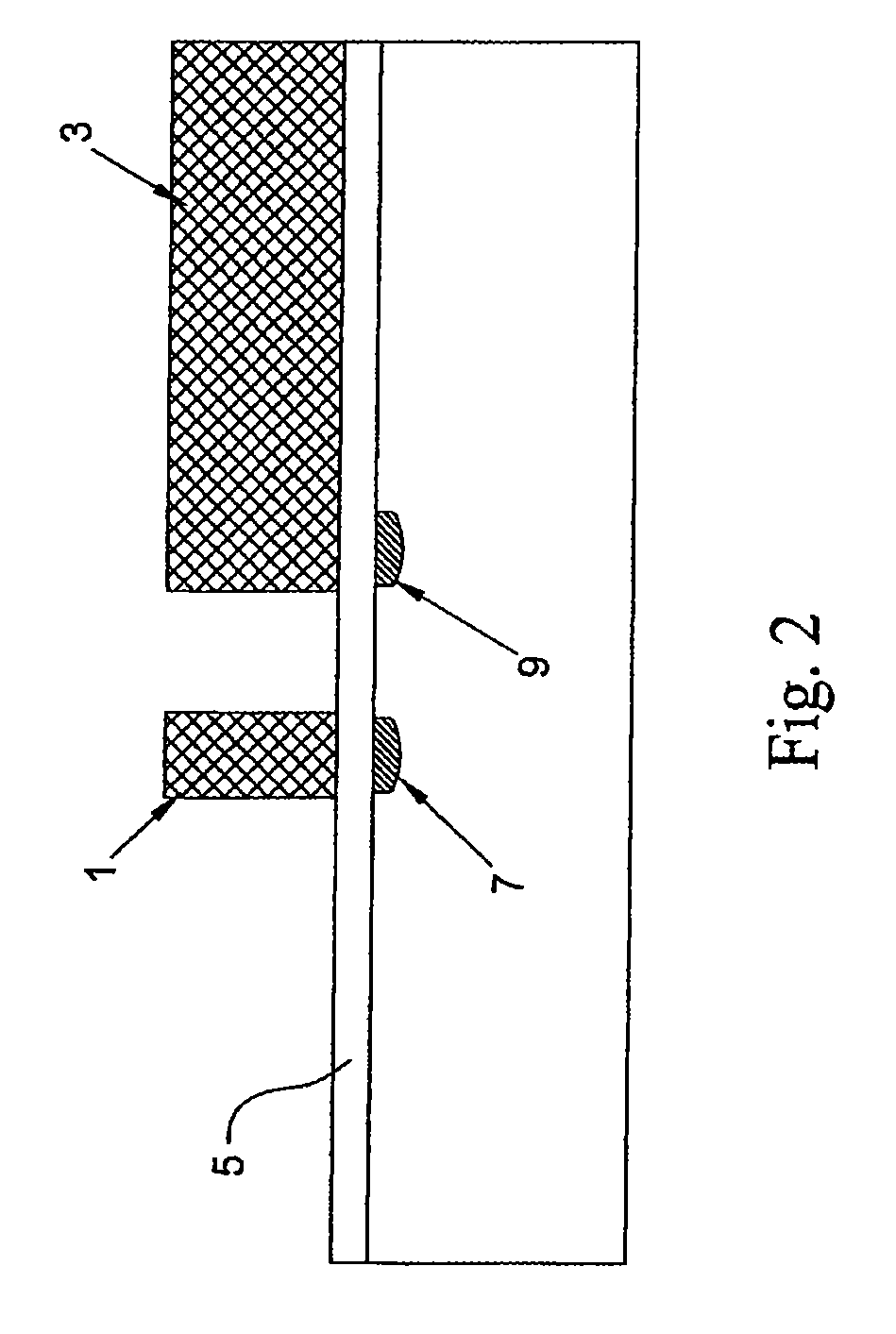Lithium niobate optical modulator
a technology of optical modulators and lithium niobate, which is applied in the field of lithium niobate optical modulators, can solve the problems of high impedance, high electrical losses, and high potential of lithium niobate mzi devices, and achieves low driving voltage, high impedance, and low electrical loss.
- Summary
- Abstract
- Description
- Claims
- Application Information
AI Technical Summary
Benefits of technology
Problems solved by technology
Method used
Image
Examples
Embodiment Construction
[0027]A first preferred asymmetric coplanar waveguide modulator structure according to the invention, shown in FIGS. 4 and 5, comprises a Z-cut lithium niobate substrate 21 with a thickness of around 500 μm presenting an optical MZI on its surface. The MZI comprises a mid section having two generally parallel waveguides 23, 25 which converge at either end into single input and output waveguides 22, 26. The parallel waveguides are formed in the plane of the surface of the substrate by a standard titanium diffusion process well known to those skilled in the art of modulator design. The axes of the parallel waveguides 23, 25 are 25 μm apart and they have a depth of around 6 μm and a width of around 10 μm A buffer layer 27 of silicon dioxide having a dielectric constant of around 4 and a thickness of 0.65 μm is grown by means of a conventional electron beam evaporation process directly on the surface of the lithium niobate substrate in which the waveguides 23, 25 are formed. Three paral...
PUM
| Property | Measurement | Unit |
|---|---|---|
| frequencies | aaaaa | aaaaa |
| thicknesses | aaaaa | aaaaa |
| frequencies | aaaaa | aaaaa |
Abstract
Description
Claims
Application Information
 Login to View More
Login to View More - R&D
- Intellectual Property
- Life Sciences
- Materials
- Tech Scout
- Unparalleled Data Quality
- Higher Quality Content
- 60% Fewer Hallucinations
Browse by: Latest US Patents, China's latest patents, Technical Efficacy Thesaurus, Application Domain, Technology Topic, Popular Technical Reports.
© 2025 PatSnap. All rights reserved.Legal|Privacy policy|Modern Slavery Act Transparency Statement|Sitemap|About US| Contact US: help@patsnap.com



